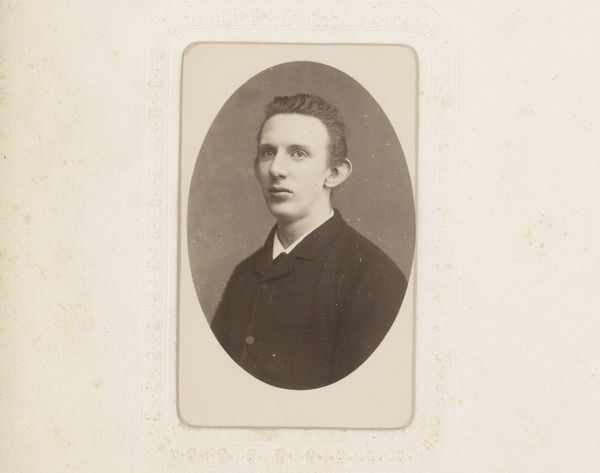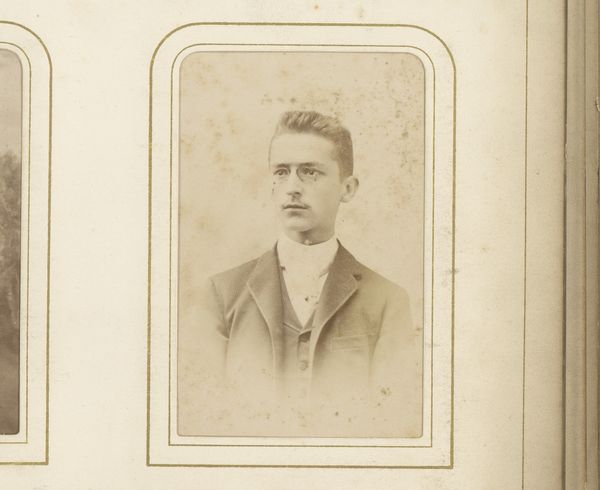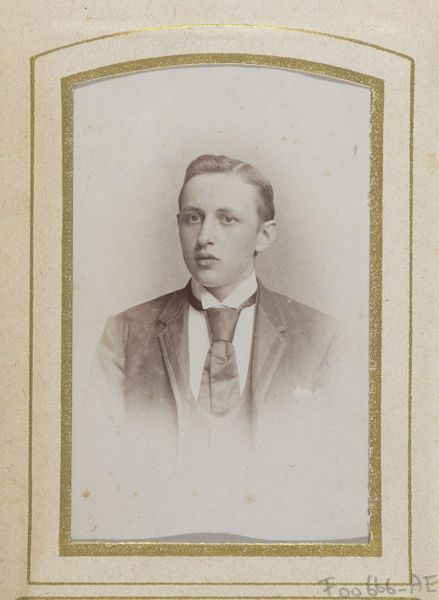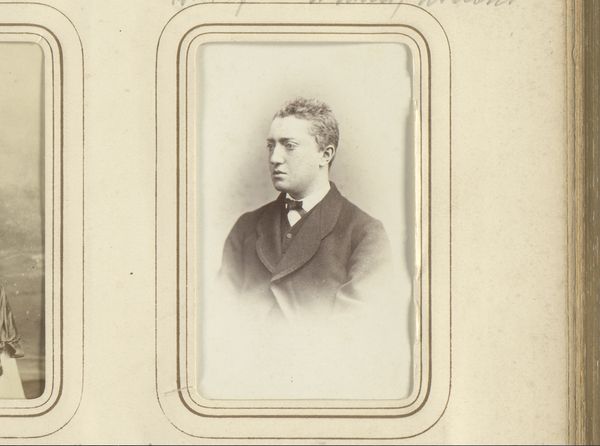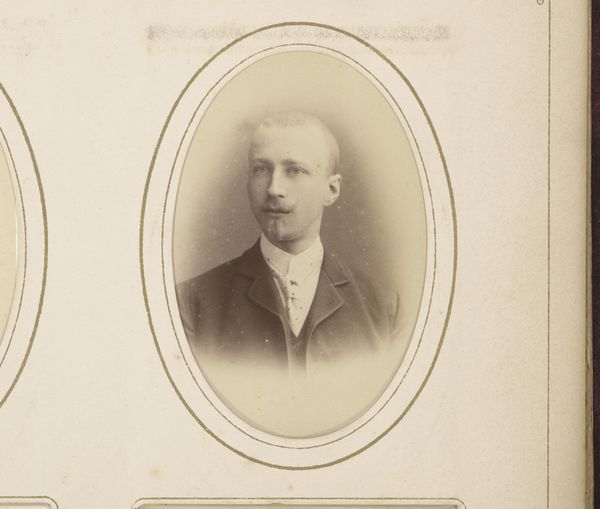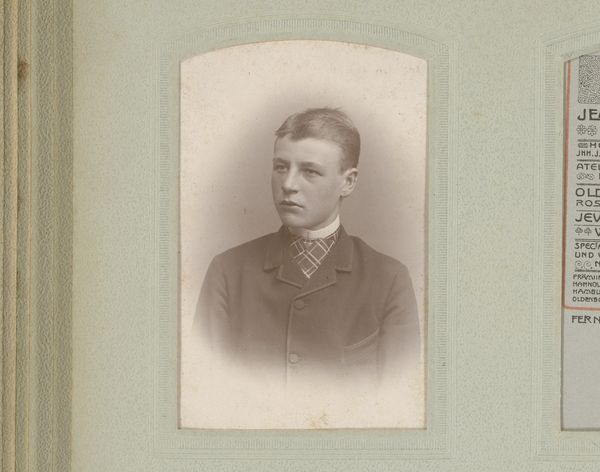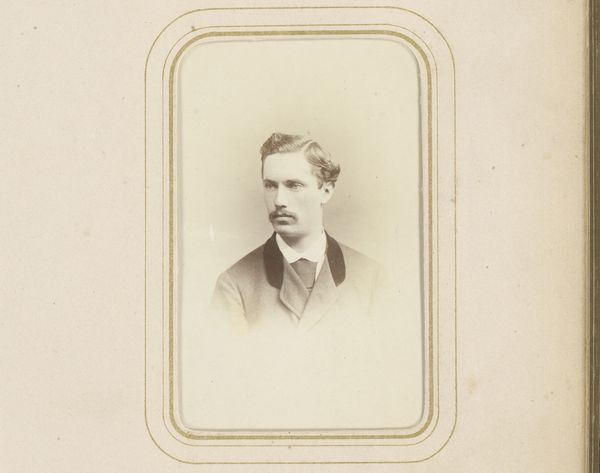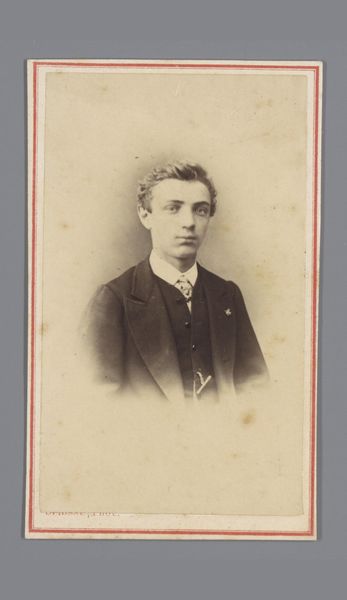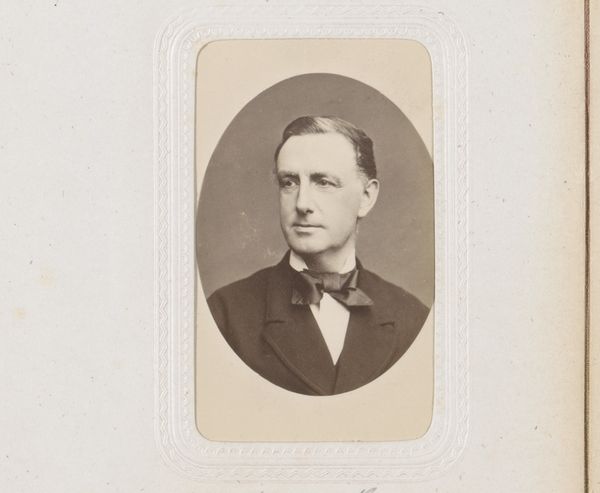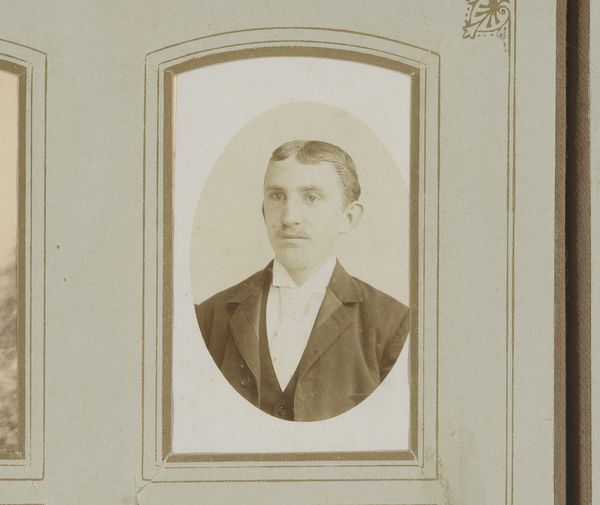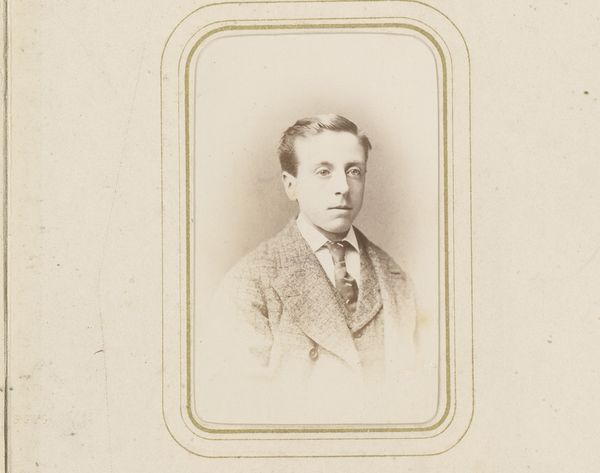
photography, gelatin-silver-print
#
portrait
#
vintage
#
photography
#
historical photography
#
gelatin-silver-print
#
19th century
#
academic-art
#
realism
Dimensions: height 82 mm, width 49 mm
Copyright: Rijks Museum: Open Domain
Editor: Here we have Ludwig Brade's "Portret van een jonge man met snor," a gelatin silver print likely from between 1850 and 1900. It's incredibly evocative, almost ghostly. I'm struck by how much the young man's gaze seems to penetrate the viewer, even across time. How do you interpret the social implications of portraiture like this from that era? Curator: It’s more than just capturing a likeness. Think about photography's rise in the 19th century, particularly amongst the bourgeoisie. It became a tool for constructing and reinforcing social identities. Consider, who had access to this technology? Who was being represented, and who was conspicuously absent from these visual archives? Editor: That's interesting. So, this portrait wouldn’t just be about this individual man, but a broader statement about class and status? Curator: Precisely. His neat suit, his carefully groomed mustache – these details signal aspirations and adherence to certain social norms. And then, consider the photographic process itself, requiring stillness, demanding a certain level of patience and perhaps performativity from the sitter. What kind of social expectations are wrapped up in that seemingly simple act of posing? Editor: It’s easy to overlook that performativity. It wasn’t a quick snapshot like today. Curator: Exactly. And how does the proliferation of such images influence the way people saw themselves and each other? These images shape understandings of beauty, masculinity, and belonging. It prompts us to reflect on who is deemed worthy of representation, and whose stories remain untold. Editor: So, viewing this image through a contemporary lens helps to expose the power dynamics at play, even in something as seemingly straightforward as a portrait? I see it very differently now. Thank you. Curator: Absolutely. Hopefully it gave a view to understand the art piece within the history of portraiture and how it reflects social stratification.
Comments
No comments
Be the first to comment and join the conversation on the ultimate creative platform.
